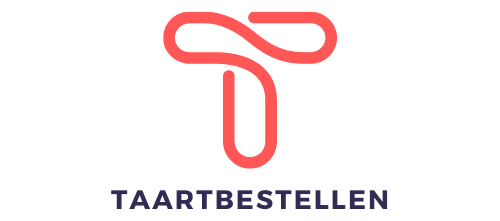How to Develop Community Sports Programs to Boost Public Health in the UK?

In the realm of public health, regular physical activity is a key player. It aids in preventing a multitude of chronic diseases and improves mental health and mood. Promoting public health through sport is not just about individual participation, it’s about building community sports programs that are accessible, inclusive, and engaging for all members of the community. In the UK, many local authorities are recognizing the value of sports as a means to enhance people’s health. This article elucidates how to develop community sports programs to boost public health in the UK and the kind of interventions and participations needed for successful provision of these programs.
Understanding the Local Community Needs
Before developing any community sports program, it’s crucial to understand the specific needs, preferences, and barriers of your local community. You should consider factors such as age, gender, socio-economic status, and cultural background.
A lire aussi : Discover why renting a vintage car in Nice is a must
Data collection is a crucial step in this process. Surveys and focus-group discussions can help identify the sports and physical activities that people in your community are most interested in. You may also wish to partner with local schools to involve scholars in the data gathering process.
Community mapping can also be beneficial. This involves identifying local resources such as parks, sports facilities, and community centers, and assessing how they can be utilized to support your program.
Dans le meme genre : Top winter jackets that blend style and comfort seamlessly
Google is a useful tool in this regard. Use Google Maps to locate potential venues for your sporting activities and Google Scholar to access academic papers on public health and community sports programs.
Developing an Intervention Plan
Once you’ve gathered your data and understood the needs of your community, the next step is to develop an intervention plan. This is where you decide which sports or physical activities to promote, how to promote them, and how to address any barriers to participation identified in the initial data collection phase.
One effective approach is to involve participants in the planning process. This can increase their sense of ownership and commitment to the program, thereby boosting participation rates.
A good intervention plan should also be flexible and adaptable. Monitor the progress of your program and be prepared to make changes based on feedback from participants and the outcomes of the activities.
Remember, the ultimate goal here is not just to increase sports participation, but to improve public health. So, your intervention plan should also include ways to measure health outcomes, such as regular health checks or surveys on participants’ physical and mental health.
Collaboration with Local Stakeholders
Collaboration with local stakeholders is another key element in developing a successful community sports program. This can include local government agencies, schools, sports clubs, health agencies, businesses, and non-profit organizations.
These collaborations can provide a range of benefits. For example, schools and sports clubs can help in the provision of coaches or sports equipment, and local businesses can provide sponsorship or funding. Health agencies can assist in monitoring the health outcomes of the program, and non-profit organizations can offer volunteers or additional resources.
Furthermore, collaborations can also help to promote your program and increase its visibility in the community. So, don’t underestimate the power of a good partnership.
Promoting Social Inclusion
Social inclusion is crucial in any community sports program. It’s not just about giving everyone the opportunity to participate in sports – it’s about making sure that everyone feels welcomed, valued, and supported.
This includes people of all ages, genders, abilities, and backgrounds. It might mean providing sports activities that cater to different skill levels, or offering activities that are culturally relevant to different ethnic groups in your community.
Moreover, promoting social inclusion can also help to strengthen community bonds and foster a sense of belonging among participants, which can contribute to wider social benefits such as reduced crime rates and increased community cohesion.
Continuous Evaluation and Improvement
Finally, no community sports program is complete without a system for continuous evaluation and improvement. This involves regularly reviewing the program’s progress and impact, and using this information to make necessary improvements.
You can use a variety of tools for this purpose. Surveys and feedback forms can give you insights into participants’ experiences and satisfaction levels. Health checks and health surveys can help you assess the impact of the program on participants’ physical and mental health.
You can also use the DOI (Digital Object Identifier) system to track your program’s impact in the academic literature. This can be particularly useful if your program involves innovative approaches or interventions that could be of interest to researchers in the field of public health and community sports.
Remember, developing a successful community sports program is a long-term commitment. It requires ongoing effort, dedication, and adaptability. But with the right approach and the right resources, it’s an achievable goal – and one that can bring significant benefits to public health in your community.
Leveraging Technology for Community Sports Programs
In the digital age, technology plays a crucial role in the successful implementation of community sports programs. One such tool is Google Scholar, a freely accessible database that provides a comprehensive collection of scholarly literature across various disciplines and formats. It can be a valuable resource in the research and development phase of your community sports program.
For instance, you can use Google Scholar to find research on the effectiveness of different types of sports interventions. These studies can provide insight into what works and what doesn’t when it comes to boosting physical activity levels and improving public health. They may also offer guidance on how to tailor your interventions to meet the specific needs of your community.
Aside from academic research, technology can also be used to facilitate the day-to-day operations of your program. For example, you can use digital platforms to schedule sports activities, track participants’ progress, and communicate with participants and stakeholders.
Moreover, technology can also be a useful tool for promoting social inclusion. For example, you can use social media platforms to engage with inactive people and encourage them to take up physical activity. You can also use technology to make your program more accessible to people with disabilities. For instance, you can provide online sports tutorials with subtitles or sign language interpretation.
Cost-Effectiveness of Community Sports Programs
In today’s economic climate, cost-effectiveness is a key consideration for any public initiative, and community sports programs are no exception. However, to truly understand the cost-effectiveness of a community sports program, one must consider both the immediate costs and the long-term benefits.
The immediate costs of a sports program can include expenses for sports facilities, equipment, staff salaries, and marketing efforts. However, these costs must be weighed against the potential health improvements that can result from increased physical activity.
For instance, regular physical activity can help prevent a range of chronic diseases, including heart disease, stroke, diabetes, and certain types of cancer. It can also improve mental health and mood, and reduce the risk of depression and anxiety. These health benefits can, in turn, lead to substantial savings in healthcare costs.
Furthermore, community sports programs can also bring about wider social benefits. They can help reduce crime rates, improve community cohesion, and boost local economies by attracting tourists and visitors. These benefits can also contribute to the cost-effectiveness of your program.
In conclusion, while developing and implementing a community sports program can require significant upfront investment, the potential health and social benefits can make it a cost-effective strategy for boosting public health in the long run.
Conclusion
In summary, developing community sports programs to boost public health in the UK involves a complex set of interventions that require a deep understanding of the local community needs, effective collaboration with local stakeholders, and continuous evaluation and improvement. By leveraging technology such as Google Scholar and focusing on social inclusion, sports programs can effectively engage inactive people and promote physical activity. Despite the costs involved in establishing sports facilities and organizing sports activities, the long-term health improvement and social benefits underscore the cost-effectiveness of these programs.
As the saying goes, "the health of the public is public wealth." So, investing in community sports programs is not just an expenditure, but an investment in the health and well-being of the community. In this light, every step taken towards boosting public health through sports is a stride towards a healthier, more vibrant, and more inclusive society.
